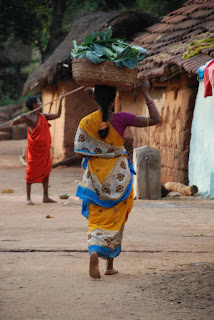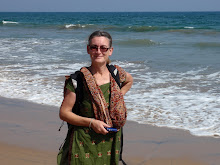I had another trip out to the field at the weekend, this time to an area close to the Machkund Dam on the border with Andhra Pradesh. The Machkund river was dammed in the late 1940's as part of a large hydro-electricity scheme. The project resulted in the displacement of many adivasi villages and families and also disrupted the irrigation that had been developed for the cultivation of paddy.
The local communities are working hard to make a sustainable living from their land with many self-help groups (SHGs) set up to facilitate the process. We were out with a colleague from another NGO talking to the community about the potential of setting up cooperatives to manage the cashew cultivation, harvest and marketing. Cashew is an important crop in this area, there are cashew plantations growing in the dry soil, many of them managed by big corporations which may not always get the best deal for the adivasi community.
I was taken on a tour through a thriving vegetable garden cultivated by a SHG. It put my gardening efforts to shame. To my inexpert eye, the soil here looks dry, lacking in organic matter and difficult to make productive. I clearly know nothing about growing vegetables.

These tomatoes may not look as visually impressive as the ones we see in our supermarkets at home but the flavour is wonderful and they cost anything between 2 and 15 rupees in the markets here, depending on demand and the weather conditions.
The potatoes are also very tasty but like growers the world over, there are pests that also make their attack on the crop, in this case rats
Carrying some of the day's harvest into the village
 The baby didn't know what to make of this strange-looking white person wielding a large contraption in front of their face. Pretty scary I think
The baby didn't know what to make of this strange-looking white person wielding a large contraption in front of their face. Pretty scary I think



















































